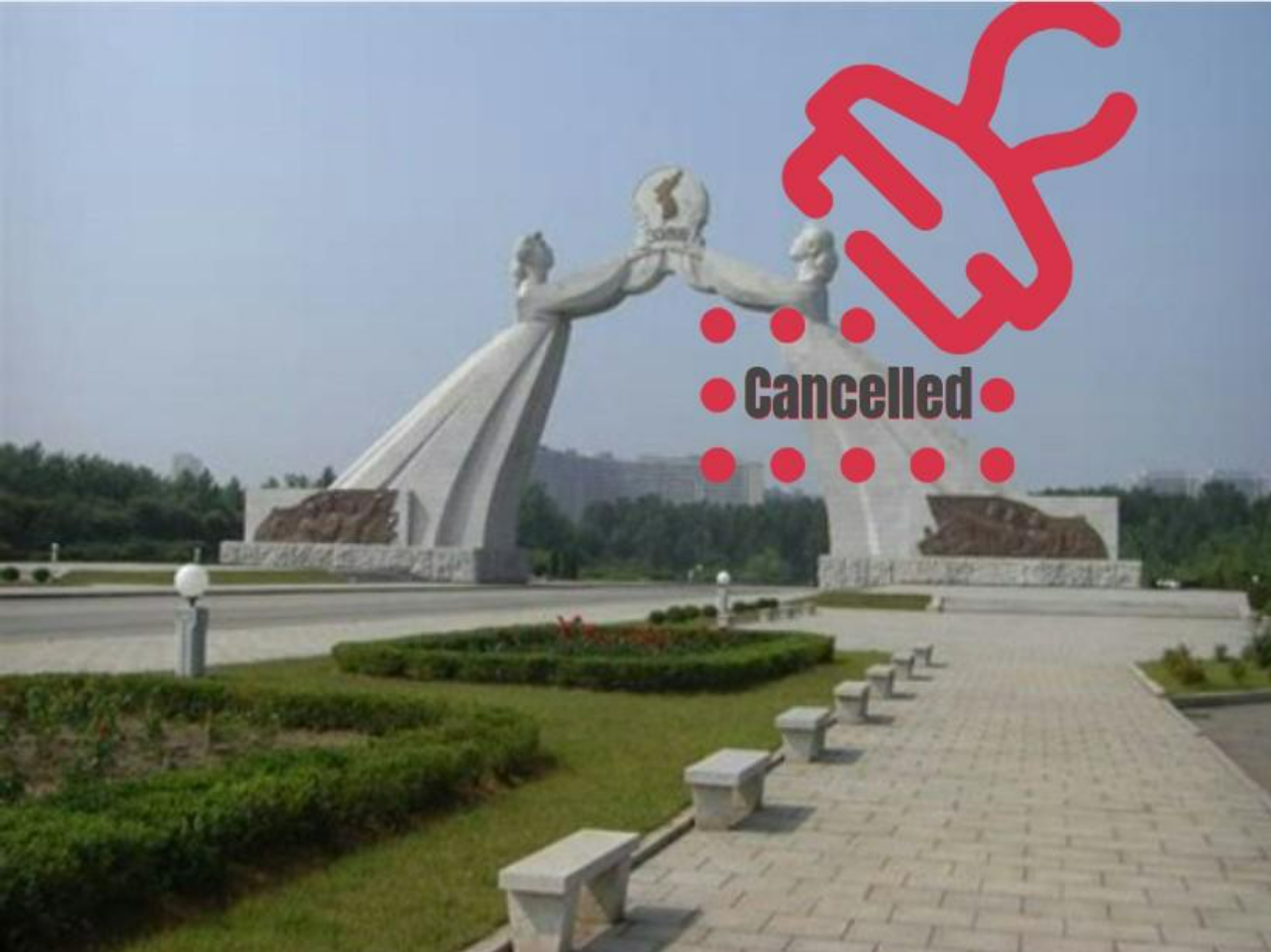The Democratic People’s Republic of Korea (North Korea) has torn down the Reunification Arch, just days after leader Kim Jong Un stated that the idea of the two countries uniting was no longer “a possibility”.
Officially called the Monument to the Three-Point Charter for National Reunification, the arch was completed on Aug. 14, 2001, under the leadership of Kim Jong Il. It depicted two women from either side of the peninsula “cheering for reunification”.
It has now been removed likely by dynamite according to satellite imagery and seemingly marks a huge generational change in ideology by the Kim Jong-Un regime
The shift in policy, as well as the taking down of the monument, marks a stark change in not just current policy from the north, but also that of his father and great-grandfather, Kim Il Sung and Kim Jong Il respectively. Both not only held it as key policies but wrote about the subject in great detail.
Why was the Arch of Reunification demolished?
The move comes after the North has shown much more belligerence towards the South and the West of late, which has of course coincided with drastically improved relations with former allies Russia.
Foreign Minister Lavrov of the Russian Federation recently visited the DPRK promising greater financial cooperation between the two sanctioned countries.
More recently Chairman Kim Jong-Un has described the Republic of Korea (south) as an enemy of North Korea. In a Jan. 15 speech to the Supreme People’s Assembly, Kim Jong Un declared that all structures and even expressions related to reunification were to be destroyed.
What this means for literature written previously is yet to be seen, but it is now likely to be retroactively removed from policy.
What was the previous view on Korean reunification?
Previous North Korean leaderships have had the reunification of the Korean Peninsula as a core part of not just policy, but also their own mythos. President Kim Il Sung famously fought the Korean War and later conflicts about the matter, while General Kim Jong Il tried a number of means both violent and peaceful in trying to reunite the country.
This has led to meetings happening periodically since the 1970s, which has led to ideals such as the Sunshine Policy, as well as most recently Leader Kim Jong Un igniting his own form of detente.
This led to not just President Moon visiting the North, but also the Moranbong Band, and of course famously the summits with President Trump.
What does this mean for Korean Reunification?
In the short-term it will likely mean an official end to the North Korean policy of peaceful reunification under the “Confederal Republic of Koryo” model, the north’s vision for how the peninsula might be united.
In the long-term things may change drastically, with North Korea arguably already part of the China/Russia access duly becoming much more belligerent to the south, while being more heavily supported by their northern neighbors.
What has led to the policy change on Korean reunification?
The sad reality is that while unification and reunification have remained official policies on both sides of the peninsula, the longer they have remained apart the more strained things have become. Defectors to the South are treated so badly now many even return home, while the general opinion among rank-and-file South Koreans is that they care more about the cost of taking in the North, rather than a vague ideology about ethnicity and shared food.
And while it is harder to say what the opinion of North Korea is, it is fairly easy to see that at least from the standpoint of the leadership there is little to no benefit in cozying up with the South, particularly when others, bigger and richer nations are more than happy to help them,
It is also perhaps sadly more evidence that reunification is not always the silver bullet people think it will be. Germany, the supposed benchmark it success still suffers more than 40 years after being reunified, while Yemen is now breaking at the seams.
Perhaps instead North and South Korea are destined to follow the fate of Romania and Moldova in that they respect their similarities, but pull their national identity from their differences.

